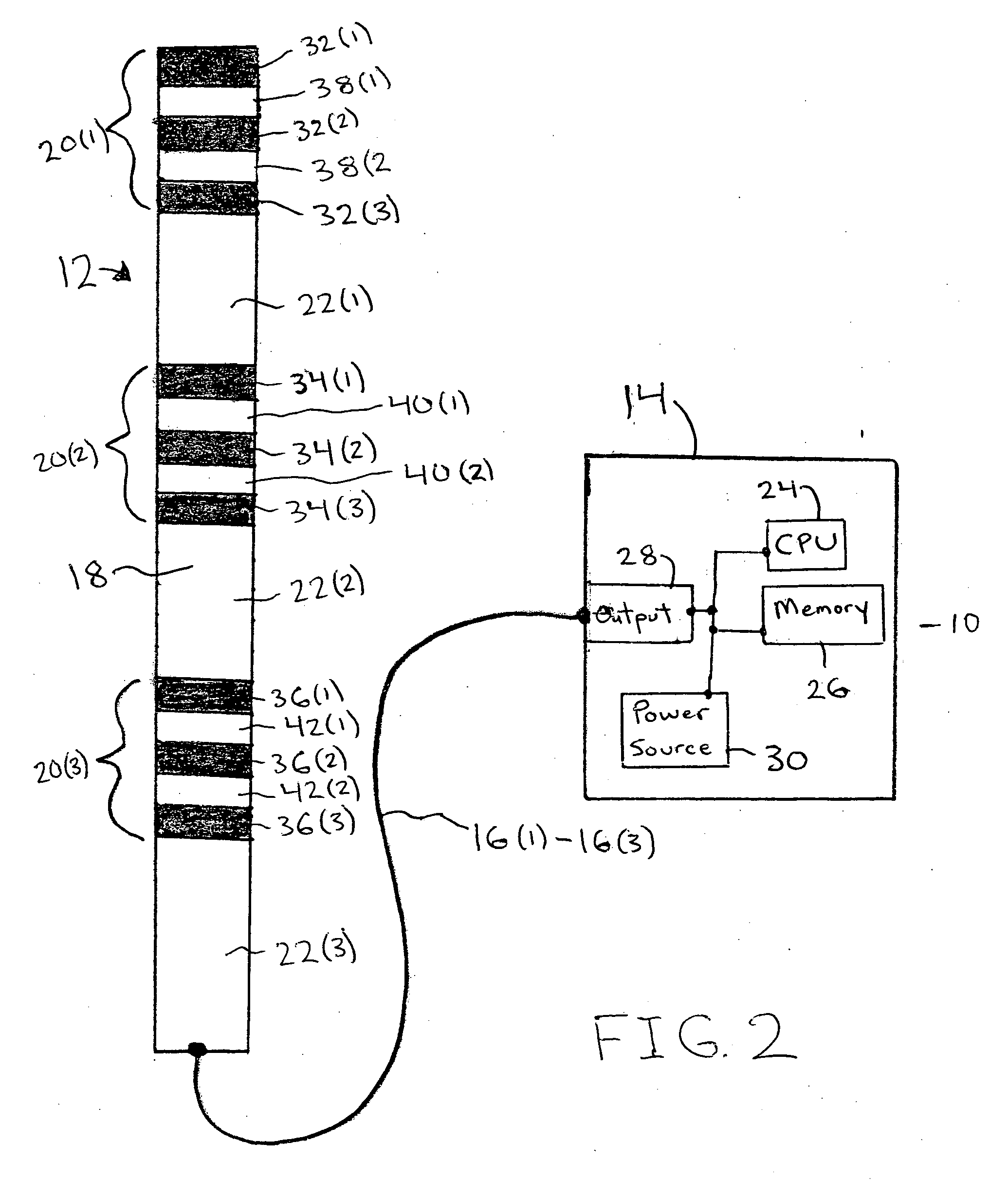Electrode array for use in medical stimulation and methods thereof
- Summary
- Abstract
- Description
- Claims
- Application Information
AI Technical Summary
Benefits of technology
Problems solved by technology
Method used
Image
Examples
Embodiment Construction
[0044] A medical device 10 with an electrode array 12 in accordance with embodiments of the present invention is illustrated in FIG. 2. The medical device 10 includes the electrode array 12 with an array body 18 and electrodes 20(1)-20(3), a pulse generator 14, and leads 16(1)-16(3), although the medical device 10 may comprise other types, numbers, and combinations of components, such as one or more of electrodes 20(4)-20(13). The present invention provides an electrode for use in an electrode array which reduces impedance and thus power consumption and thereby increases battery life by increasing the outer perimeter or edges of the electrodes in the electrode array.
[0045] Referring more specifically to FIG. 2, the electrode array 12 includes an array body 18 with electrodes 20(1)-20(3) and insulating regions 22(1)-22(3), although the electrode array 12 may comprise other types, numbers, and combinations of electrodes, insulating regions, and other components. Electrodes 20(1)-20(3...
PUM
 Login to View More
Login to View More Abstract
Description
Claims
Application Information
 Login to View More
Login to View More - R&D
- Intellectual Property
- Life Sciences
- Materials
- Tech Scout
- Unparalleled Data Quality
- Higher Quality Content
- 60% Fewer Hallucinations
Browse by: Latest US Patents, China's latest patents, Technical Efficacy Thesaurus, Application Domain, Technology Topic, Popular Technical Reports.
© 2025 PatSnap. All rights reserved.Legal|Privacy policy|Modern Slavery Act Transparency Statement|Sitemap|About US| Contact US: help@patsnap.com



